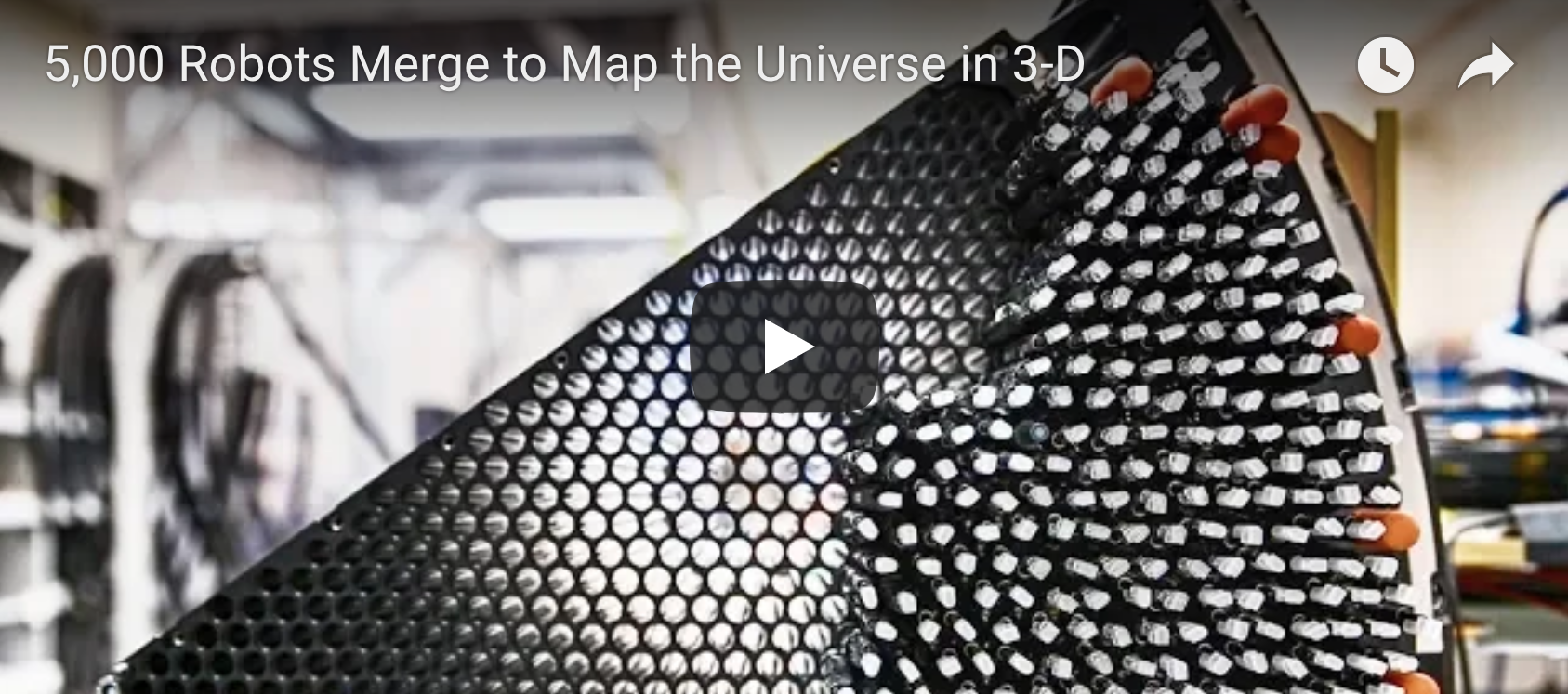(Credit: Marilyn Chung/Berkeley Lab)
How do you create the largest 3D map of the universe? It’s as easy as teaching 5,000 robots how to “dance.” DESI, the Dark Energy Spectroscopic Instrument, is an experiment that will target millions of distant galaxies by automatically swiveling fiber-optic positioners (the robots) to point at them and gather their light. In creating this detailed map, scientists hope to learn more about dark energy, which is driving the accelerating expansion of the universe.
Scientists working at Berkeley Lab are assembling this array of robots and their related electronics – which represent hundreds of thousands of individual parts – into a group of 10 wedge-shaped petals that will be fitted together to form a circular focal plane. The focal plane will be mounted near the top of the Mayall Telescope at Kitt Peak National Observatory near Tucson, Arizona.
This 3-minute video features interviews with two Berkeley Lab scientists:
- Joseph Silber, Focal Plane Lead Engineer, DESI
- Claire Poppett, Lead Fiber Scientist for DESI
View related videos:
- Watch a single “petal” for DESI’s focal plane under assembly
- View work on the focal plane system from several different angles
- More DESI videos at https://www.desi.lbl.gov/videos/
###
Lawrence Berkeley National Laboratory addresses the world’s most urgent scientific challenges by advancing sustainable energy, protecting human health, creating new materials, and revealing the origin and fate of the universe. Founded in 1931, Berkeley Lab’s scientific expertise has been recognized with 13 Nobel prizes. The University of California manages Berkeley Lab for the U.S. Department of Energy’s Office of Science. For more, visit www.lbl.gov.
DOE’s Office of Science is the single largest supporter of basic research in the physical sciences in the United States, and is working to address some of the most pressing challenges of our time. For more information, please visit science.energy.gov.
